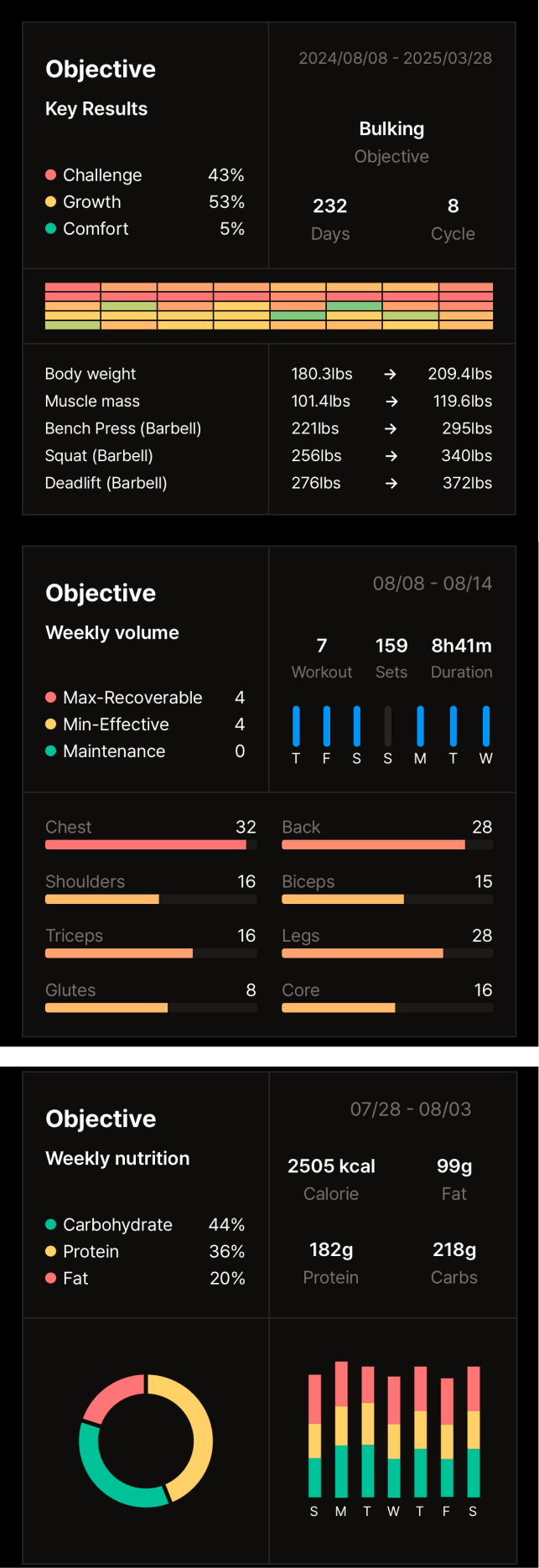Advanced Programs (Body Part Splits, Hybrid Strength)
Introduction:
Imagine unlocking new levels of strength and fitness through strategic and specialized workout routines. This blog will explore advanced workout programs, focusing on body part splits and hybrid strength training. These methods are designed to take your fitness journey to the next level, especially if you're moving beyond beginner routines. Think of advanced programs as the key to optimizing your performance and achieving remarkable results. By the end of this article, you'll have the tools to design a workout plan that suits your unique goals.
Understanding Advanced Workouts
Defining Advanced Workouts
Advanced workouts are structured training programs designed to maximize muscle hypertrophy, strength gains, and overall athletic performance. They differ from beginner routines by incorporating higher intensity, volume, and more complex exercises. Advanced workouts often require a deeper understanding of training principles and a greater commitment to consistency. They are typically adopted after a solid foundation of basic training has been established.
Benefits of Advanced Training
Advanced training offers numerous advantages. These include significant increases in strength and muscle mass, improved athletic performance in various disciplines, and enhanced metabolic function. Advanced workouts can also boost confidence and provide a greater sense of accomplishment in your fitness journey.
Body Part Splits: Targeted Muscle Growth
What Are Body Part Splits?
Basic Structure of Body Part Splits
Body part splits involve dedicating specific training days to individual muscle groups. This allows for focused attention and intense work on each muscle group, promoting optimal growth and development. For example, one day might focus on chest and triceps, while another targets back and biceps. This concentrated effort can lead to faster gains compared to full-body routines.
Pros and Cons
Body part splits offer benefits like targeted muscle development, allowing you to focus intensely on specific areas. This can be particularly beneficial for bodybuilders or those looking to address muscle imbalances. However, they can also require more time in the gym and necessitate adequate rest for each muscle group.
Designing Your Body Part Split Routine
Sample Week Plan
Here’s a sample body part split you can adapt: Monday: Chest and Triceps, Tuesday: Back and Biceps, Wednesday: Legs and Shoulders, Thursday: Rest, Friday: Chest and Triceps, Saturday: Back and Biceps, Sunday: Legs and Shoulders. This routine allows for two training sessions per week for each muscle group, except shoulders which are trained once per week with legs.
Customizing for Your Needs
This sample plan can be adjusted based on your individual goals and recovery capacity. You might choose to focus on fewer muscle groups per day or incorporate additional rest days. Listen to your body and adjust the plan as needed to optimize results and prevent overtraining.
Hybrid Strength Programs: The Best of Both Worlds
What is Hybrid Strength Training?
Combining Techniques
Hybrid strength training blends elements of traditional strength training with other modalities like cardiovascular exercise, plyometrics, or calisthenics. This approach offers a well-rounded fitness experience, improving both strength and endurance. It can be a highly effective way to break through plateaus and achieve diverse fitness goals.
Who Should Try Hybrid Programs?
Hybrid programs are suitable for individuals seeking a balanced approach to fitness. They are beneficial for those who want to improve overall athleticism, build muscle, and enhance cardiovascular health simultaneously. They can be adapted for various fitness levels. 
Creating a Hybrid Strength Routine
Key Components
Creating a hybrid routine involves balancing cardio and strength training. Consider frequency, intensity, time, and type (FITT) principles, and exercise selection. Aim for a mix of compound movements (like squats and deadlifts) and isolation exercises (like bicep curls and triceps extensions). Include cardio activities like running, swimming, or cycling.
Example Hybrid Workouts
A sample hybrid workout could include a circuit of squats, push-ups, rows, and burpees, followed by a short interval run. Another option could be a strength training session focused on upper body, followed by a 30-minute swim.
Advanced Techniques for Success
Implementing Progressive Overload
Progressive overload is a fundamental principle of muscle growth. It involves gradually increasing the stress placed on your muscles over time. This can be achieved by increasing weight, reps, sets, or reducing rest periods. Consistent application of progressive overload forces your muscles to adapt and grow stronger.
Monitoring Progress
Tracking your workouts is crucial for monitoring progress. Keep a workout log, noting sets, reps, weight used, and rest periods. Regularly assess your strength gains and adjust your program accordingly. Use tools like fitness trackers or apps to monitor your overall activity levels and recovery.
Safety Practices
Maintaining proper form during exercises is paramount to prevent injuries. Focus on controlled movements and avoid using momentum to lift weights. Listen to your body and stop if you experience pain. Consulting with a qualified fitness professional, such as a certified personal trainer or strength and conditioning specialist, can help ensure proper technique and individualized program design.
Rest and Recovery
Adequate rest and recovery are essential for muscle repair and growth, as well as injury prevention. Ensure sufficient sleep (7-9 hours per night), proper nutrition, and incorporate rest days into your training schedule. Active recovery, such as light stretching or walking, can also aid in recovery and reduce muscle soreness. 
Conclusion
This blog explored advanced workout methodologies, including body part splits and hybrid strength programs. These advanced techniques offer significant benefits for those seeking to maximize strength gains, muscle growth, and overall fitness. Consistent application of these principles, coupled with proper nutrition, recovery, and progressive overload, can unlock new levels of athletic performance.

